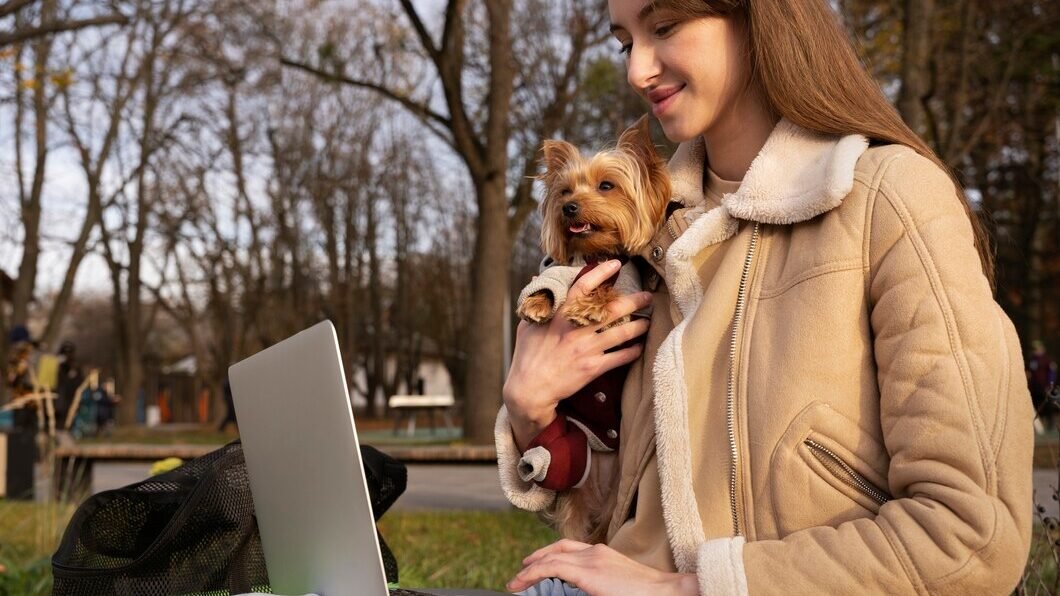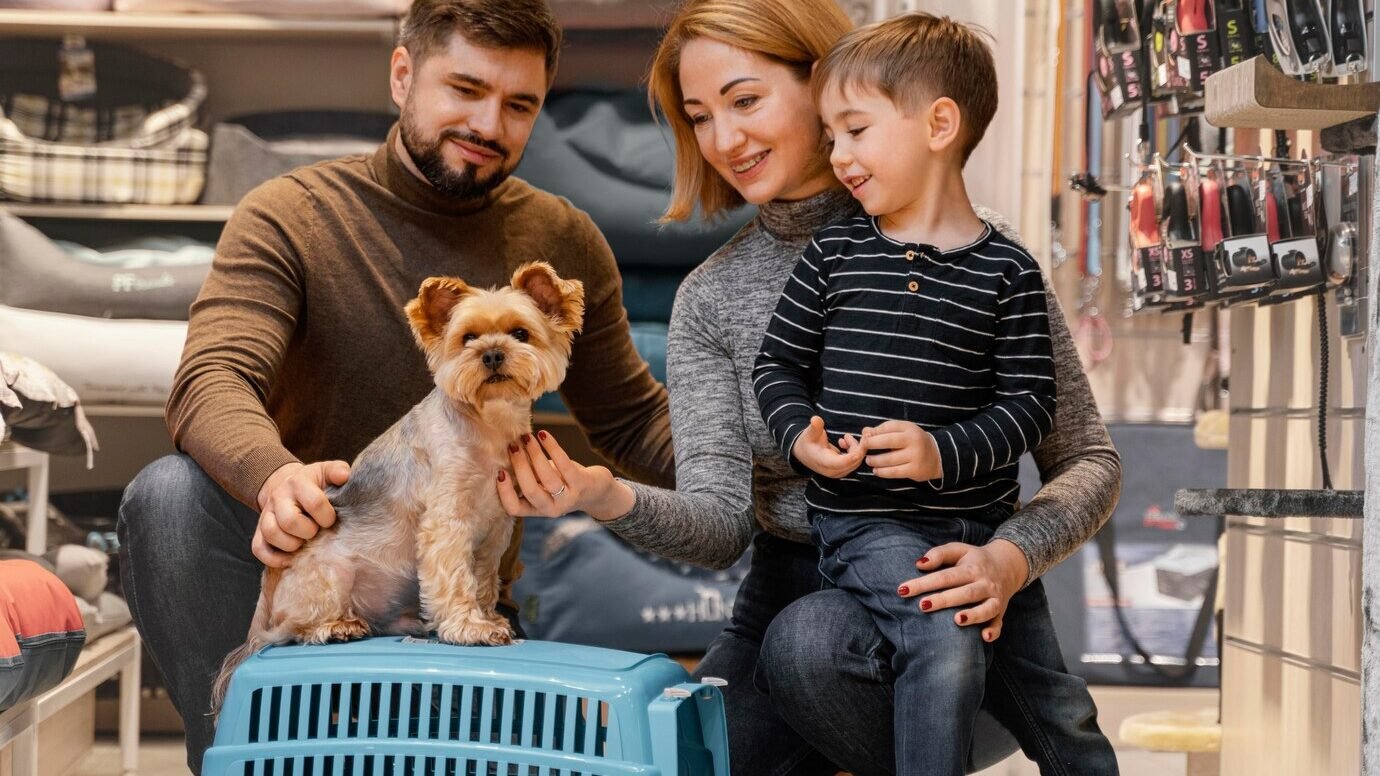Travelling by air with your beloved pet, be it a furry friend or an emotional support animal (ESA), demands careful planning and understanding. My comprehensive Guide to Pets Airline Travel, including ESAs and crates, offers essential insights to ensure a smooth journey for both you and your companion.
According to the UK Pet Food’s annual pet population data, about 57 percent of UK households (16.2 million) house 38 million pets
This guide aims to equip you with the necessary knowledge to make informed decisions, reduce stress, and guarantee a safe and comfortable experience for your pet.
Common Airline Policies for Pets
In-Cabin Travel:
I’ve found that many airlines allow small pets to travel in the cabin with their owners, provided they are kept in an approved carrier that fits under the seat in front of you. This option is typically available for small dogs, cats, and occasionally small birds or rabbits, with certain size and weight limits in place.
Cargo:
For my larger pets that cannot travel in the cabin, they can be transported in the aircraft’s cargo hold. This area is climate-controlled and pressurised for their safety. Airlines enforce strict regulations for crates used in cargo travel, requiring them to meet IATA standards.
Emotional Support Animals (ESAs):
The rules for ESAs can vary widely. While some airlines still accept ESAs with the proper documentation, others might classify them simply as pets, depending on the rules of the destination country. In the UK, whether ESAs are allowed on flights is up to the airline’s discretion, and specific documentation from a healthcare professional is often needed. If you’re planning to travel with your furry friend, it’s essential to consult the Guide to Pets Airline Travel for updated regulations and requirements.
Guide to Pets Airline Travel: Tips for Researching and Choosing Pet-Friendly Airlines

Start Early:
I always begin my research well in advance of my travel date. This gives me plenty of time to understand the policies, prepare any necessary documentation, and make any adjustments to my travel plans, including consulting the Guide to Pets Airline Travel for relevant information.
Check Airline Websites:
I’ve found that the most reliable source of information on an airline’s pet policy is its official website. I look for sections dedicated to travelling with pets or ESAs, which usually detail the allowed types of pets, carrier requirements, fees, and any restrictions.
Contact Customer Service:
If the information online is unclear or if I have specific questions, I contact the airline’s customer service directly. They can provide the most current and detailed information regarding travelling with my pet.
Consider Pet Friendliness:
Some airlines are more accommodating to pets than others, offering additional services such as pet relief areas at airports or allowing more pets in the cabin. Reviews and testimonials from other pet owners can be invaluable in choosing an airline.
Understand International and Domestic Regulations:
I am aware that international travel with pets often involves additional health certificates, vaccinations, and sometimes quarantine periods. I ensure I’m familiar with both the airline’s policies and the entry requirements of my destination country.
Preparing Your Pet for Airline Travel
Ensuring my pet is well-prepared for airline travel involves a series of important steps, from health checks and vaccinations to getting them comfortable with their travel crate. For those of us travelling with Emotional Support Animals (ESAs), understanding the specific requirements, as outlined in the Guide to Pets Airline Travel, is crucial to a smooth journey.
Health Checks and Vaccinations
Before I set out on my journey, a visit to the vet is essential to ensure my pet is fit for air travel. This check-up assesses my pet’s health and confirms that all necessary vaccinations are up to date, a requirement for many destinations and airlines. Additionally, obtaining a health certificate close to my departure date is often mandatory, serving as official proof of my pet’s fitness for travel and vaccination status.
Acclimating Your Pet to a Crate
Getting my pet accustomed to their crate is key to reducing travel anxiety. I start by introducing the crate early, allowing my pet to explore and become familiar with it in a stress-free environment. Creating positive associations with the crate through the use of treats and favourite toys can make it a comforting space for my pet. Gradually, I extend the time my pet spends in the crate, including periods with the door closed, to build their comfort and confidence for the journey. This process is essential for preparing them for Guide to Pets Airline Travel.
A Guide to ESAs: What You Need to Know
Emotional Support Animals provide crucial comfort and support for me and others with mental and emotional conditions. Unlike service animals, ESAs are not automatically granted access to all public spaces, including aircraft cabins, and the rules governing their travel can vary significantly between airlines.
To travel with my ESA, I must provide documentation from a licensed mental health professional. This letter should detail my need for the ESA and is subject to verification by the airline. As airline policies regarding ESAs can differ greatly, it’s important for me to research and understand my chosen airline’s specific requirements well in advance of my trip. This preparation ensures that both my ESA and I can navigate the travel process as smoothly as possible, especially when consulting the Guide to Pets Airline Travel.
Selecting the Right Crate for Air Travel

Selecting the Right Crate for Air Travel
Choosing the correct crate for my pet is crucial for their comfort and safety during air travel. Here are some important considerations I keep in mind when selecting an airline-approved crate:
Criteria for Choosing an Airline-Approved Crate
Size and Dimensions: I ensure the crate is spacious enough for my pet to stand, turn around, and lie down comfortably. Most airlines have specific size requirements for crates, so I check their guidelines before purchasing.
Durability:
I opt for a crate made of sturdy materials that can withstand the rigours of air travel. I look for crates that are IATA (International Air Transport Association) compliant, as they meet the industry standards for strength and construction.
Ventilation:
Proper ventilation is essential to ensure my pet has an adequate supply of fresh air during the journey. I look for crates with plenty of ventilation holes or slats on all sides.
Ensuring Your Pet’s Comfort and Safety Within the Crate
Familiarisation:
I introduce my pet to the crate well in advance of our travel date. I place their favourite toys and blankets inside to make it a comfortable and inviting space.
Gradual Acclimatisation:
I gradually increase the amount of time my pet spends inside the crate, starting with short periods and gradually extending them over time. I use positive reinforcement, such as treats and praise, to encourage my pet to enter the crate willingly.
Proper Positioning:
I position the crate in a quiet, well-ventilated area of my home where my pet feels safe and secure. I avoid placing the crate in direct sunlight or near sources of heat or cold.
By following these guidelines and selecting the right crate for my pet, I can ensure their comfort and safety during air travel.
Tips for a Smooth Journey
Preparing for the day of travel involves careful planning and consideration to ensure a smooth and stress-free experience for both my pet and me. Here are some essential tips:
Day-of Travel Tips
Feeding Schedule: I avoid feeding my pet a large meal right before travel to reduce the risk of motion sickness. I offer a small, light meal a few hours before departure, and provide access to water up until check-in.
Exercise:
I give my pet plenty of exercise before travel to help them relax during the journey. A tired pet is more likely to rest peacefully during the flight.
Dealing with Layovers and Transfers
Pet Relief Areas:
If I have a layover or transfer, I inquire about pet relief areas at the airport. These designated areas provide a safe and comfortable space for my pet to stretch their legs and relieve themselves before the next leg of the journey.
Monitoring Your Pet:
During layovers and transfers, I keep a close eye on my pet’s well-being. I ensure they have access to water and a comfortable resting area, and I avoid leaving them unattended for extended periods.
Ensuring a Safe and Pleasant Journey for Both
In conclusion, pet airline travel requires careful planning and preparation to ensure the safety, comfort, and well-being of your beloved companions. From selecting the right crate and acclimating your pet to understanding airline policies and dealing with layovers, there are many factors to consider to ensure a smooth journey.
By being well-prepared and informed, pet owners can minimise stress and anxiety for both themselves and their pets during air travel.
Ready to Fly with Your Pet?

For pet owners seeking a stress-free travel experience, “Pets Lets Travel” is your trusted partner in pet transportation. My team of experts offers tailored solutions to meet your pet’s specific needs, from crate selection and documentation assistance to door-to-door transportation services.
Contact us today to learn more about how we can help make your pet’s next journey a seamless and enjoyable experience. Whether you’re planning a domestic trip or an international adventure, “Pets Lets Travel” is here to ensure that your pet travels safely, comfortably, and with the care and attention they deserve.





